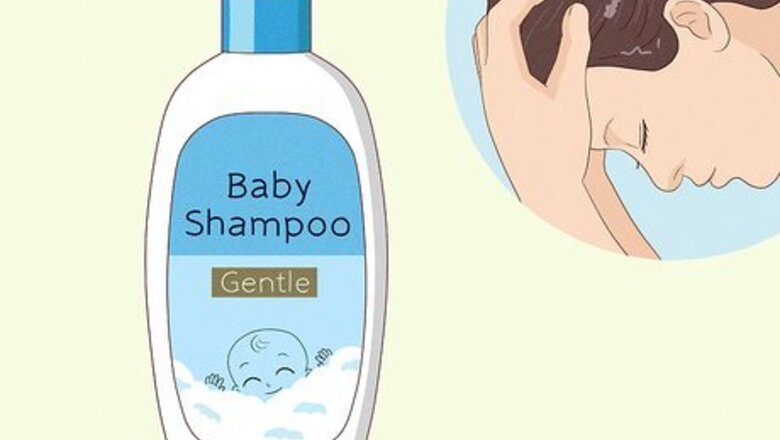
views
X
Trustworthy Source
American Academy of Dermatology
Professional organization made of over 20,000 certified dermatologists
Go to source
Plus, we’ll teach you how to avoid a dye-related allergic reaction from happening in the future, so you can rest easy and dye your hair with confidence. Read on for a soothed scalp!
- Wash your hair with a gentle shampoo (like baby shampoo) to cleanse your scalp and clear away any leftover dye.
- Rub a quarter-sized amount of hydrogen peroxide on your scalp and hair before immediately rinsing it off.
- Apply OTC steroid cream to your scalp if the skin looks inflamed and red.
Relieving an Itchy Scalp
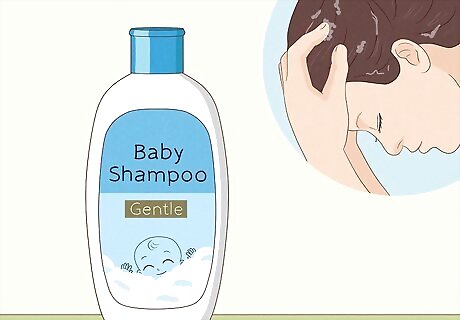
Wash your hair with a gentle shampoo to remove excess hair dye. Pour a quarter-sized amount of gentle shampoo, such as baby shampoo, into your hands and rub it throughout your scalp until it suds up. Then, rinse the shampoo and excess dye out of your hair with warm water. Leaving excess dye on your scalp and hair is one of the most common causes of itching. Let your hair dry naturally and avoid using heat, as styling tools may further aggravate the itchiness of your scalp. Using a hydrating shampoo as well as conditioner will help to nourish and soothe your scalp. Avoid shampoos with harsh ingredients like parabens and phthalates to avoid further irritating your scalp.
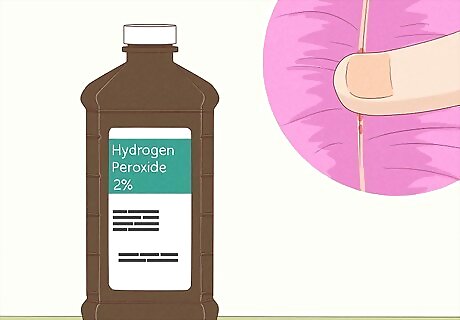
Apply 2% hydrogen peroxide to your scalp and quickly wash it off. Pour about a quarter-sized amount of 2% hydrogen peroxide into your palm. Then, evenly distribute the solution to your scalp using a comb or brush. As soon as you’ve rubbed in the hydrogen peroxide, rinse it out under cool water so it doesn’t affect your hair color, and don’t be tempted to scratch, as it will only irritate your scalp further. The hydrogen peroxide will oxidize the dye chemicals, which should help stop the adverse reaction on your scalp. Hydrogen peroxide may start to lighten your hair color if you leave it on too long, so be sure to rinse it out as soon as you’ve rubbed it into your scalp.
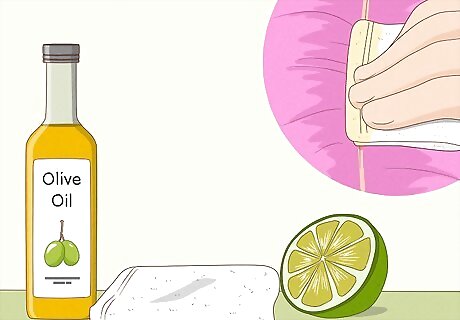
Hold an olive oil and lime-soaked compress on your scalp. Saturate a disposable, damp towel or clean, old rag with olive oil. Then, squeeze the juice from 1 lime over the cloth evenly, and place the compress on your scalp for around 15 minutes or until the itchiness starts to subside. Rinse any excess oil from your hair with warm water after using the compress. An olive oil and lime compress may help soothe your itchy skin by alleviating skin tightness caused by the hair dye. Place the compress in the refrigerator for a few minutes to enhance its soothing and cooling benefits.
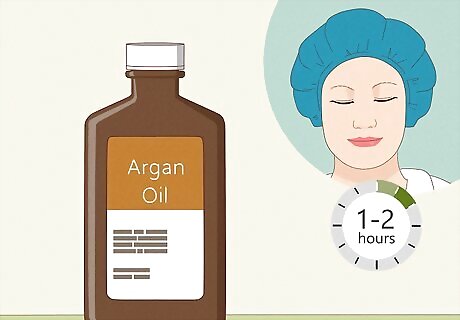
Apply 2-3 tablespoons of Argan oil to your scalp and let sit for 1-2 hours. Argan oil's nourishing properties may help quickly soothe an irritated scalp. Measure 2-3 tablespoons of Argan oil and carefully apply it to your scalp, working it through your hair from root to tip with your fingers. Then, gather your hair in a bun or a shower cap and allow the oil to sit for 1-2 hours before rinsing it out with warm water. Coconut oil is another excellent, soothing alternative to swap out for Argan oil.
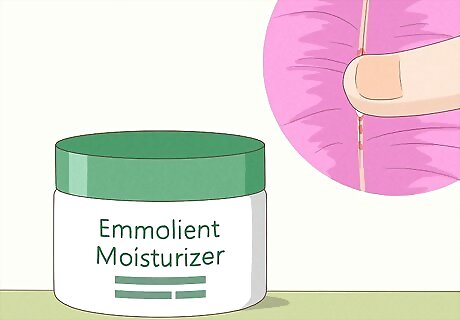
Apply an emollient, moisturizing cream to calm an itchy scalp. Squeeze a generous amount of your chosen emollient cream into your palm. Then rub your hands together and evenly distribute the cream across your scalp. Leave the emollient cream on for 1-2 hours to soothe your scalp before rinsing it out with warm water. The emollient cream will help calm irritation, redness, and itchiness so you can enjoy your new look without the itch! Popular emollient moisturizers include Vaseline and Aquaphor.
Alleviating an Allergic Reaction
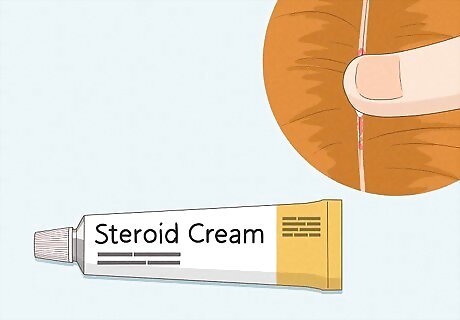
Apply an over-the-counter steroid cream if your scalp is red or inflamed. In most cases, allergic reactions to hair dye are minor, so you’ll likely be able to treat it at home with an over-the-counter steroid cream. For best results, follow the instructions on the bottle and only apply it as often as instructed. This typically means evenly applying a quarter-sized amount of the cream onto your scalp with your hands. If your symptoms are severe or persistent, your doctor may be able to prescribe you a prescription-strength steroid cream. Signs of an allergic reaction to an ingredient in the dye include pain, tenderness, a rash, or sores on your scalp. You can also ask your doctor or dermatologist to write you a prescription for topical corticosteroid shampoo (like Clobex), which may provide some relief.
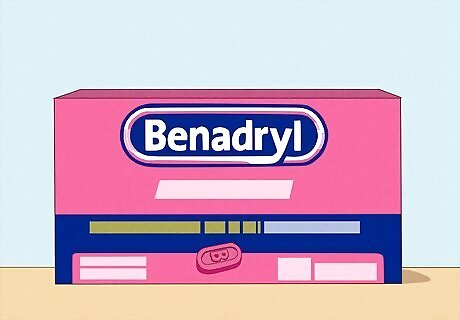
Take an over-the-counter oral antihistamine to help stop the itchiness. If your itchy scalp is the result of an allergic reaction to an ingredient in the hair dye, over-the-counter oral antihistamines like Benadryl can provide relief. Take your antihistamine of choice as directed, and try your best not to scratch—it should start working within the hour! Many oral antihistamines cause drowsiness, so be sure to use them as directed and avoid driving if necessary.
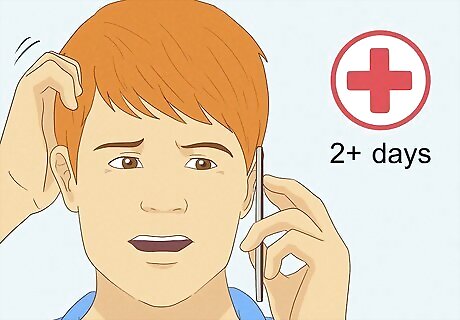
See your doctor if the itchiness continues for more than 2 days. If your symptoms, such as redness, irritation, and/or itchiness, persist for over 2 days, make an appointment to see your doctor or get a referral to an allergy specialist. Either your doctor or an allergy specialist can perform allergy tests to assess what ingredient caused the reaction and determine how to treat it so your itchiness subsides. Make an appointment to see your doctor or an allergy specialist if your itchy scalp becomes inflamed or if you develop a rash. Normally, itching should typically subside within a few hours of applying the hair dye.
Preventing an Itchy Scalp from Hair Dye
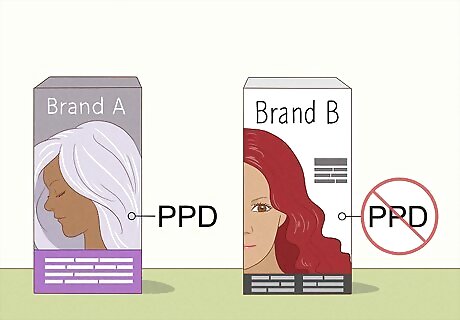
Opt for hair dyes without paraphenylenediamine (PPD). Most hair dye reactions are caused by a chemical called paraphenylenediamine (PPD), which is unfortunately present in most popular dyes. If you get an itchy scalp after using a particular type or brand of hair dye, take note of the ingredients to avoid using hair dyes with the same active chemicals in the future. PPD is primarily found in dark-colored hair dyes. To minimize your chances of an allergic reaction, look for hair dyes with key phrases such as “Paraben and sulfate free” and/or “PPD free.”
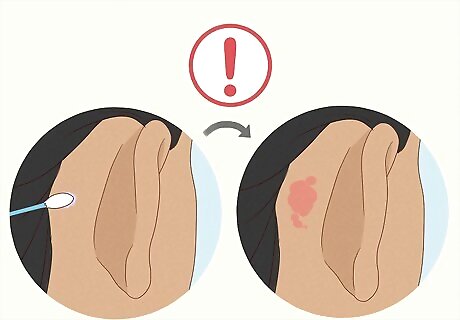
Dab hair dye behind your ear to spot test for an allergy. Before using a new hair dye, dab a small amount of the dye on your scalp just behind your ear with a cotton swab. Then, wait about 24 hours to test for an allergic reaction. If your skin starts to itch or get swollen and red, it’s likely that you’re allergic to PPD or another ingredient in the dye and will get an itchy scalp if you proceed to apply it to your head. Salon stylists will also perform a patch test if requested.
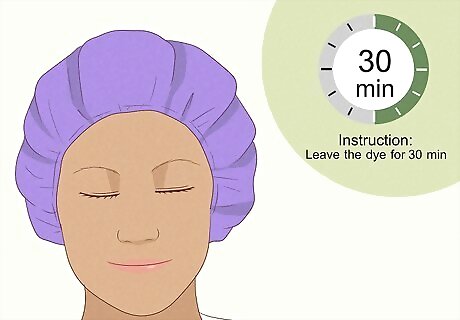
Leave the dye on your hair for as long as the instructions state. If you’re trying to cover stubborn grays or dye your hair a drastically different color, leaving the hair dye on for longer than instructed on the box or bottle can be tempting. Unfortunately, doing so increases the likelihood of getting contact dermatitis (an itchy rash caused by contact with an allergen), so it’s critical that you never leave the dye on for longer than instructed. Most at-home hair dyes should be left on for 10 to 45 minutes or as directed. Some hair stylists suggest dying unwashed hair, as the oils on your scalp may help to provide a layer of protection between the dye and your scalp.



















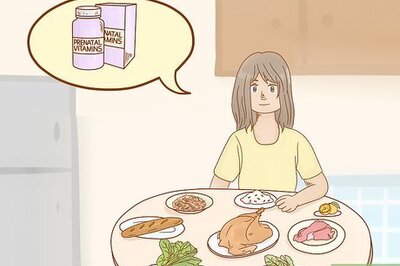
Comments
0 comment